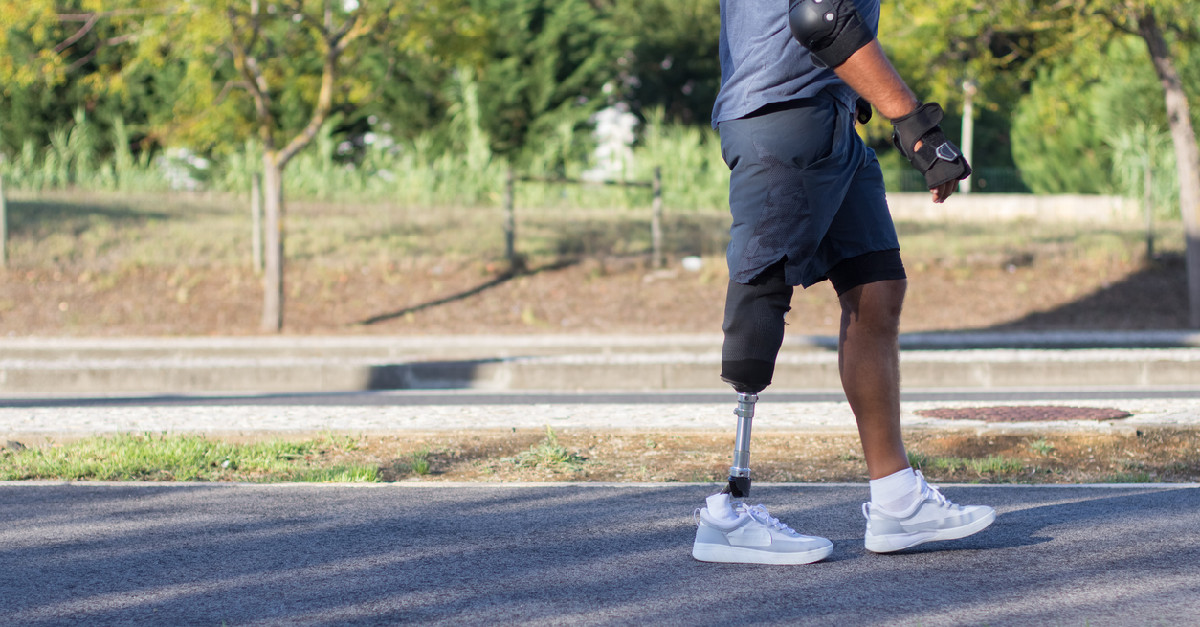As the weather gets warmer, you may notice some seasonal changes that affect your prosthetic. From variations in fit to increased perspiration, these factors can’t be avoided altogether — but with the right care, you can continue to enjoy your favorite summer activities with minimal impact on your prosthetic use.
Prosthetics in the Heat: What to Expect from Seasonal Changes
Oftentimes, warm weather leads to swelling in your extremities. Heat prompts blood vessels to dilate, and gravity forces fluids to move down into your hands or legs. Known as heat edema, this phenomenon is normal, but can be particularly irritating if you find your prosthetic fits differently when the temperature rises. Besides being uncomfortable, an ill-fitting prosthetic can lead to more serious issues, including skin sores, pain, and instability.
Summer may also introduce opportunities to enjoy more warm-weather fun. From boating to beachside vacations, there are plenty of outdoor activities to fill the long, temperate days of summer. Chances are these experiences will also lead to an increase in moisture levels, whether it’s sweat, water, or a combination of both.
Moisture damage could be a concern depending on the type of prosthetic device you have. For instance, metal components can corrode or electronic components could be compromised. And no matter which type of device you have, trapped moisture can create an environment for infections, or could cause your prosthetic to slip out of place.
Tips for Wearing Prosthetics in the Heat
Even with the less-than-ideal aspects of summer to consider, you can enjoy outdoor activities safely and comfortably as a prosthetics wearer — here’s how.
Block Out Moisture
Keeping your residual limb dry is one of the most important ways to maintain safe and comfortable use of your prosthetic in warm weather. You can’t avoid sweating in the heat, but moisture-absorbing prosthetic socks are a simple solution. These sheath-like garments are made from moisture-wicking materials to keep your residual limb dry and comfortable. If you’re planning a long outing, consider packing multiple socks for easy changes.
Clean or Change Your Liner
Prosthetic liners are designed to enhance safety and comfort by creating a cushion between your residual limb and the prosthetic socket. While some may last up to 12 months, others may begin to wear within six to nine months. As with the prosthesis itself, a liner’s longevity will also depend on individual factors, such as your activity levels.
Since weather-related moisture may accelerate wear and tear, it’s especially important to check your liner this time of year. You may need to change it sooner, or you might find that having an extra one as backup comes in handy. For example, you’ll want to wash your liner with soap and water often during the summer to keep it clean and free of bacteria. Consider using a fresh one while your go-to liner dries.
See Your Prosthetist
If you’re experiencing any discomfort or fit issues, don’t wait to see your prosthetist. While a permanent prosthesis can be expected to last up to five years, you may need a new socket if the tissue of your residual limb has settled into shape, or the socket has become damaged. Our prosthetic care team is here to ensure the maximum level of comfort and support, whether you require minor adjustments or being fitted with an entirely new device.
Schedule a Prosthetics Appointment With Vascular Surgical Associates
From prosthetic walking and training to pre-surgical consultations and follow-up care, rely on our dedicated physicians and prosthetists for comprehensive prosthetic care. To schedule an appointment, use our online request form or call our office at 770-423-0595.





